13 Ways of Looking:
Janna Levin and Lia Halloran
Black Hole Survival Guide is the lean distillation of my own strange trip into the universe’s most enigmatic phenomenon. The book is a field guide from a lifetime of thought experiments, explorations of the imagination, and attempts to narrate an encounter with an invisible void.
Dark against a dark sky, black holes are nothing and look like nothing. They are an austere and flawless emptiness, an abyss in spacetime. The death state of the heaviest stars, black holes are themselves no more than a shadow. In the final death throes, collapse is alarmingly swift and inevitable, crushing the stellar plasma to less than a millionth its original expanse until not even its own light can escape. The star continues to fall, leaving behind an archeological imprint in the shape of space, the famed event horizon, a profound and unassailable demarcation in the universe. The star is gone. Only the empty event horizon remains, invisible, unless light rains near enough to cast the shadow. Hence, the irony of trying to visualize them.
My black hole calculations rarely involve words but often involve drawings. I can only calculate on unlined paper and the marks vary in size, getting crisper and relatively smaller (though not objectively small) and more controlled as I rework the ideas through the math. The accompanying images tend to be loose and symbolic but encapsulate entire concepts. After seemingly endless revisions of the calculations and drawings, I then have to recount the experience of that fantastical terrain in a completely different written language.
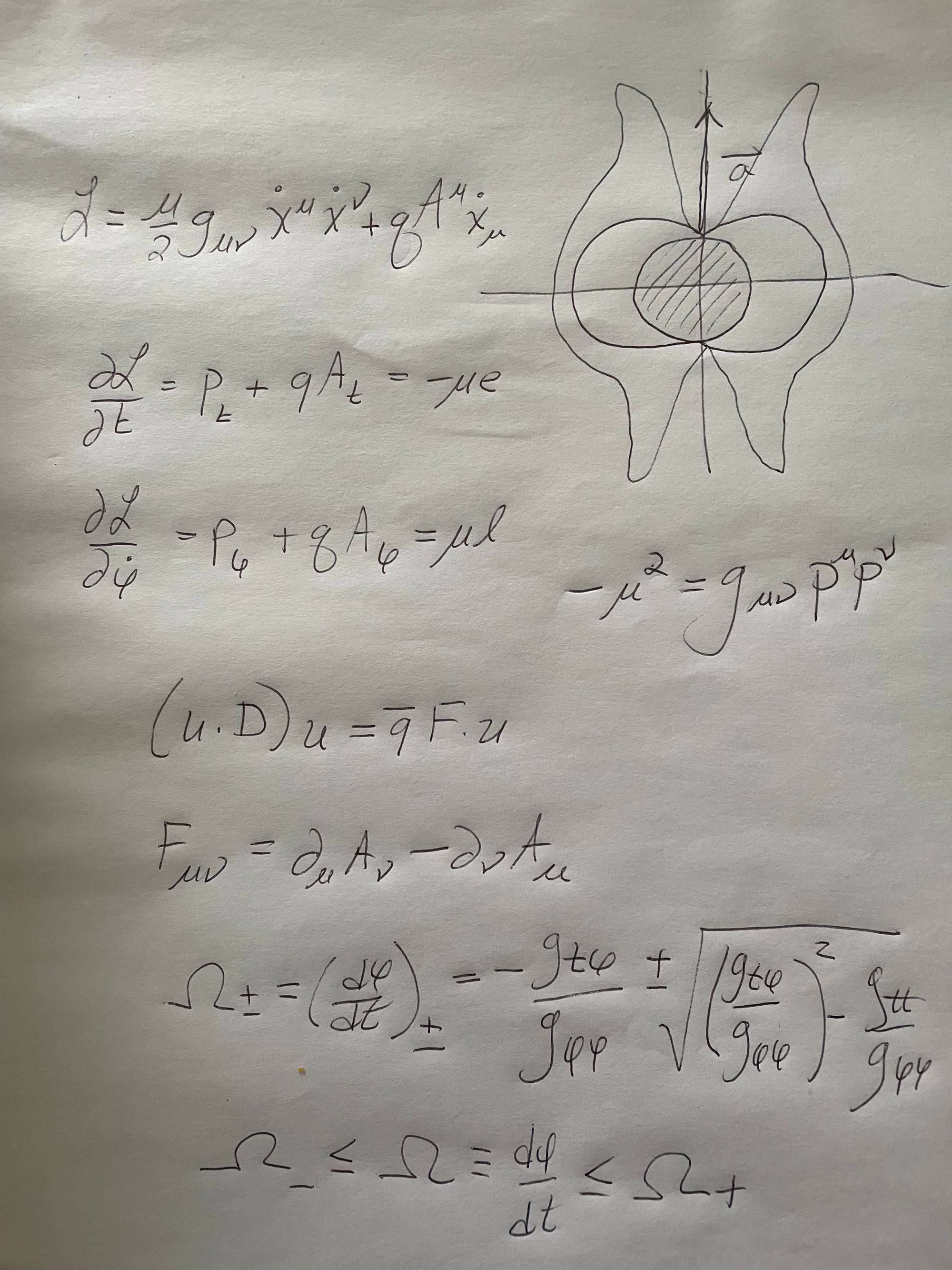
For the survival guide, I had mock ups of each of the images that formed the pivots of the journey in and around black holes. I drew them by hand infinitely many times and eventually finessed them digitally. Though they were crucial for my experience in these thought-journeys, I did not have the skill or the visual vocabulary to render the drawings coherently or beautifully.
Over too many martinis with my dear friend Lia Halloran, I was lamenting my inability to provide this important aspect of the guide. Lia loves science, loves space, loves time, loves black holes, loves thinking about black holes, loves making me talk about black holes after the aforementioned too-many-martinis. That night, in the bar of the Ace hotel in Manhattan, our collaboration began organically as we plotted out ideas on napkins. Later, under the confines of the pandemic, we worked remotely, looking together at influences Lia gathered until she had created a generous visual complement to my narrated imaginings. I was fascinated by Lia’s process and observed her experimenting until she honed in on a theoretical framework for the paintings. In the continued spirit of our collaboration, Lia describes the process, her many ways of looking, in her own words.
I’ve always been intrigued by early images of space exploration, the earnest intent to visualize what our future might look like as explorers. When the opportunity to collaborate with Janna arose, I wanted to reference books and imagery of space travel that gained traction during the 60s in the height of the space race—the more fantastical the better. One of my favorites is Beyond Tomorrow: The Next 50 Years in Space by Dandridge M. Cole; it’s generously populated with drawings and paintings of self-titled “Space Art” by Roy G. Scarfo. What's so captivating about these images is the fortune-telling, magic-ball-peek into an imagined future.
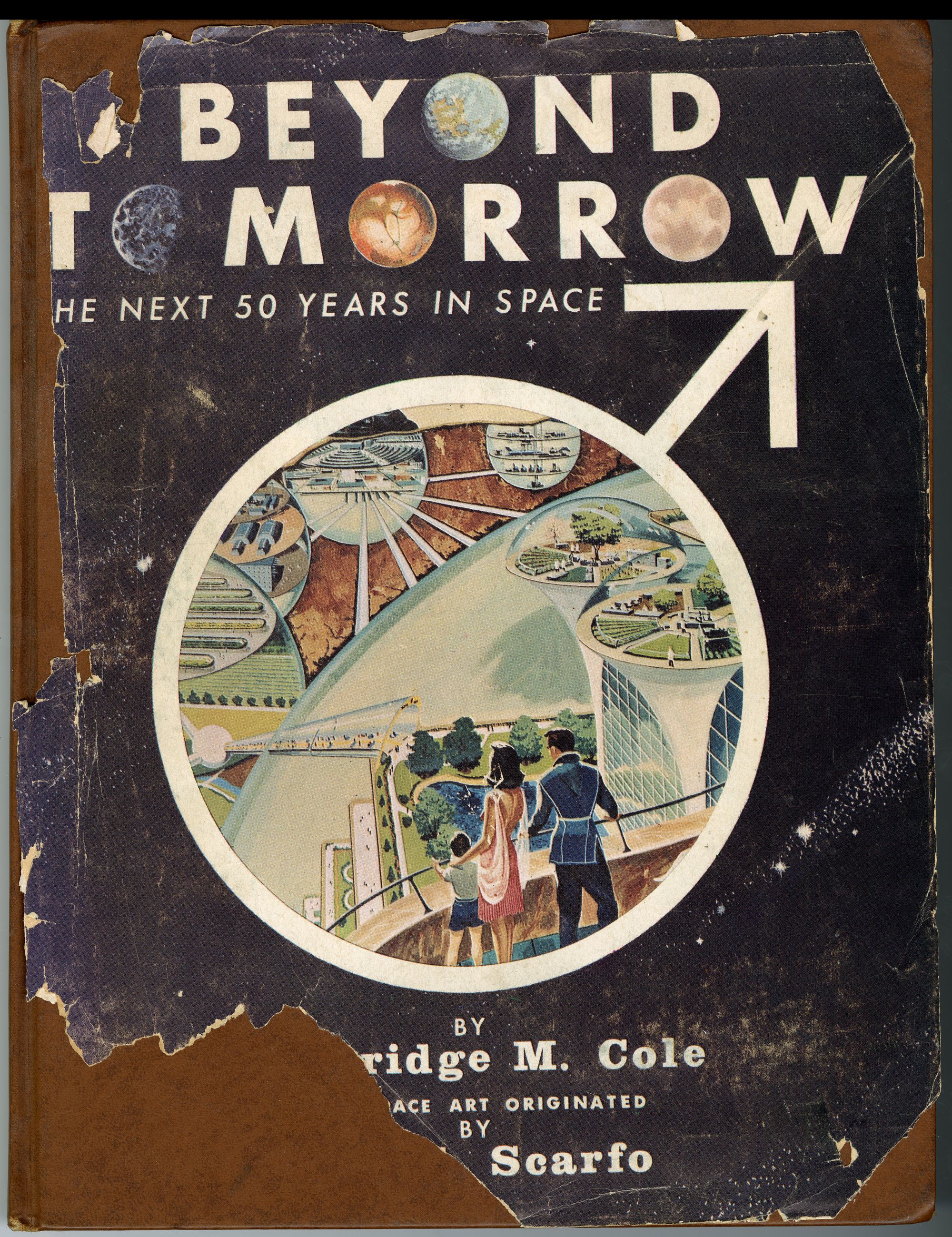
When creating the Black Hole Survival Guide artwork, I referred to Beyond Tomorrow and several others like it, including the NASA Graphics Standards Manual, which contains diagrams and fonts worthy of nostalgic reproduction on posters or t-shirts.

This aesthetic immediately triggers an optimistic message, as if passed through time: the future will be so much better, look where our curiosity can take us. One of the last chapters is titled “Improvements in Man” (and to no one's surprise, there are only men featured), which contains a curious illustration depicting “Saucer Men,” accompanied by a text presenting the good news that artificial organs will be so sublimely superior 50 years into the future that all will we need is our heads. While we may look at these images now as simply whimsical or entertaining (wow, they got a lot wrong), when these were drafted there was a collective feeling that the future was rapidly upon us as we advanced to colonize space.

Perhaps this will be how the work I’ve created for Black Hole Survival Guide will be seen in the future as we learn more and more about wildly fascinating black holes; that my attempt to visualize a black hole close up will, in time, seem outdated, revealing the shortcomings of what we know now vs. what we will know in the future.
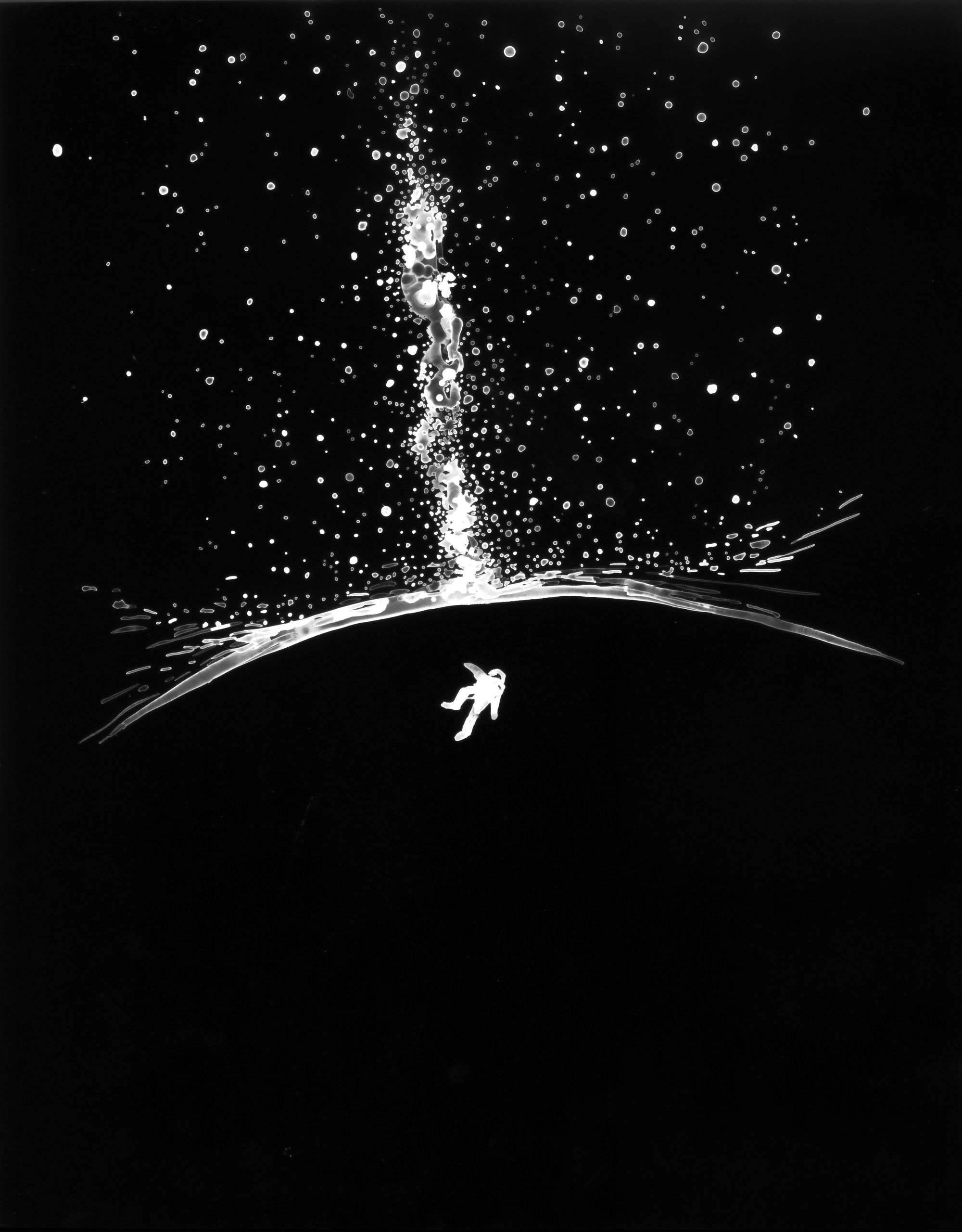
While many of the paintings I made were a nod to these early drawings and diagrams of space travel, the size of the book was also a fantastic and subtle way to trigger nostalgia. The book is pocket-sized, there's an intimacy and familiarity to its scale—something like an old field guide you'd carry on you while hiking. I would have loved if the book contained a built-in bookmark and band you see on Moleskin notebooks, as if your survival of a black hole was dependent on the current passage you were reading in the book.
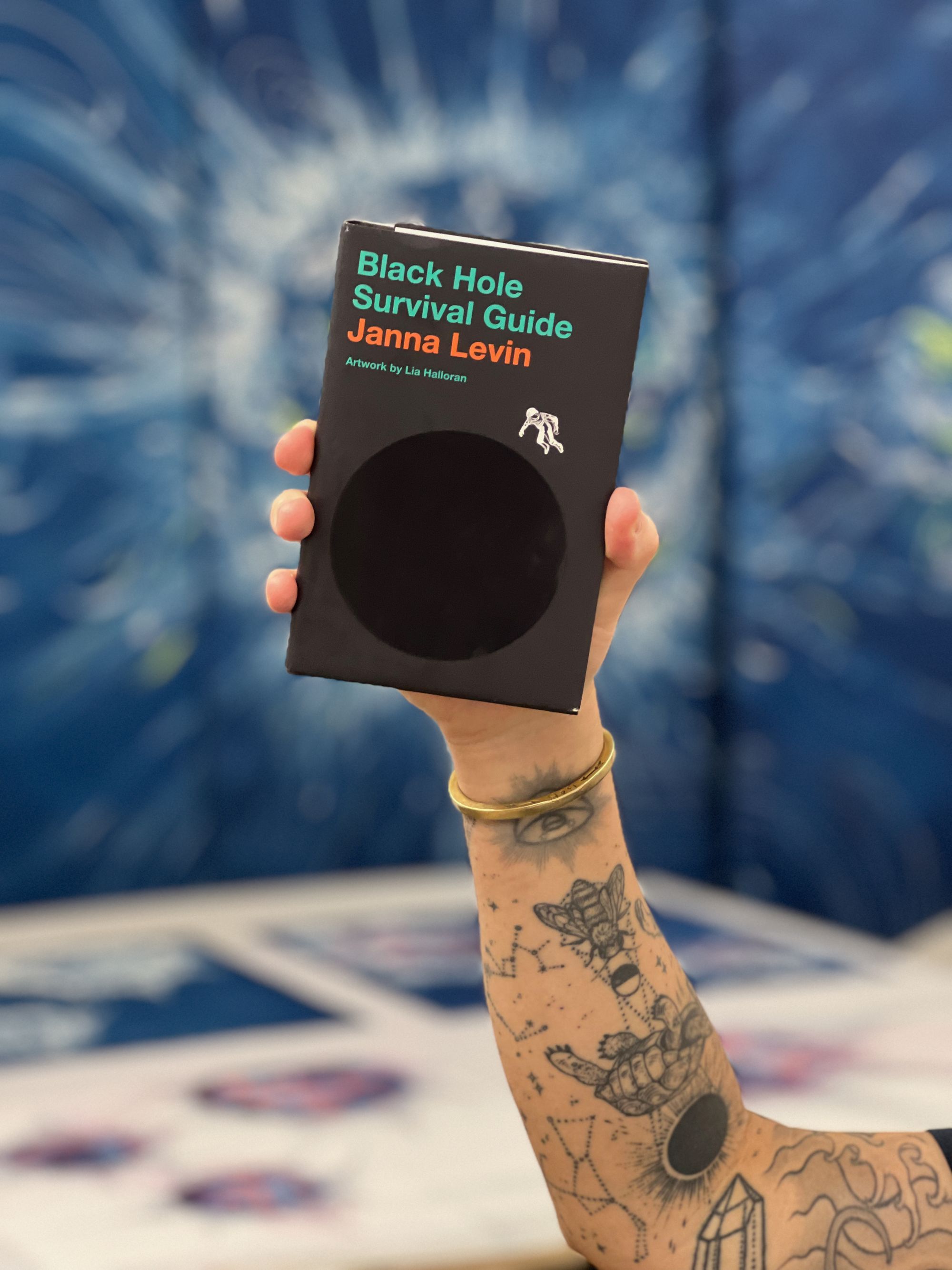
In many of the preliminary sketches I made, Janna and I chatted about the role of gender in the creation of a spacesuit for our brave space explorer. We both had the same initial thought: we have to have a female astronaut, but one who avoids the traditional pitfalls of the sci-fi, ridiculously skintight bodysuit. As someone who falls in the non-binary category myself (and as someone who would also love to go to space someday), we happily landed on a gender-neutral space suit. This may seem like a small detail, but when you think carefully about previous science diagrams you've seen, most (if not all) have been of men. We want you to know that it is either a badass woman or some very cool gender neutral person under there.

Because the book was so physically small and the concepts were so grand—the overall experience of the Universe’s vastness so eloquently described in this book—I grappled with how to represent very specific concepts that Janna was writing about on such a small scale. Approaching the images in two ways, I had the first fall into the category of the diagrammatic, aiming to visualize something very specific or essential in the book that Janna was describing.

The second approach was to represent the experiential awe one might feel while staring down a black hole, and those images are much more painterly.

With visual influences ranging from vintage NASA diagrams to field guides to space books predicting the future, I also wanted my paintings to have a contemporary sleekness that referenced these materials but were decidedly not simple.
All the works were created in reverse; instead of painting on traditional paper, I start with an ink painting on translucent pieces of drafting film, which allow light to pass through. I then used these as if each were a negative, making a contact sheet to print its photographic positive. Each piece was then laid on top of light sensitive photographic paper in the darkroom. The final images you see in the book are the inversions of the original paintings: what was dark ink is now white. What was originally a white background is now black. This process of using paintings as photo negatives, historically titled cliché verre (a painting on a piece of glass used to make a photographic print), is a process I often used in my studio practice to make large-scale cyanotypes.
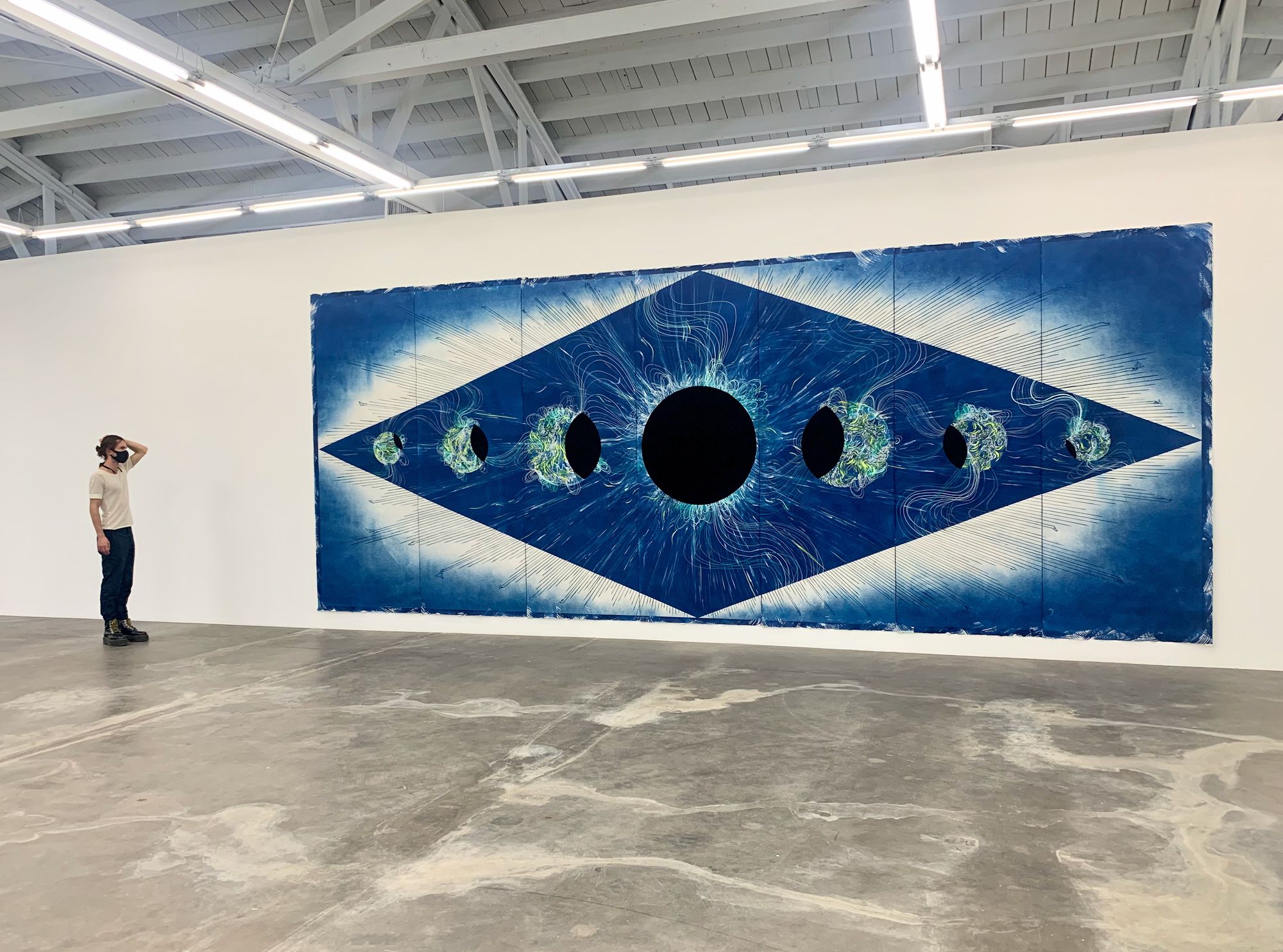
Passing ideas and sketches back and forth with Janna was a dialogue between her complex ideas and an attempt to visually transform them into something tangible, to put body and physicality to something we can only try to imagine. If anything, a good collaboration is just finding the right people to continue the conversation, and to share another round of martinis. ♦

Subscribe to Broadcast